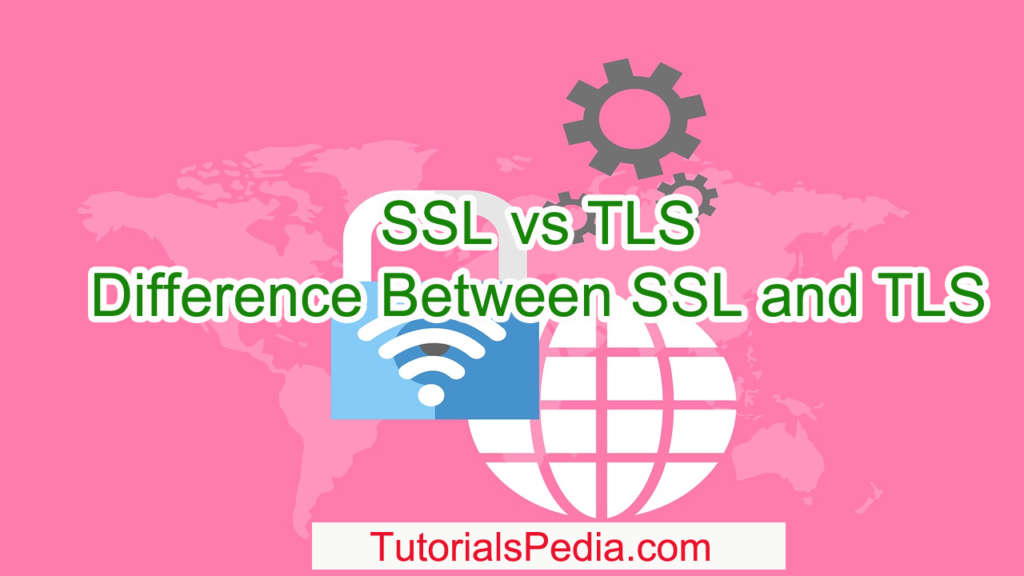SSL is widely used since long to achieve security of data communicated over public networks. In OSI seven layer model, SSL sits between the Application layer and the Transport layer, traditionally seen as part of the Presentation layer. SSL (Secure Sockets Layer) and TLS (Transport Layer Security) are two very common words which are often used interchangeably when implementing secure communication over a network. In this article, I will explain this SSL vs TLS terminology. I will also discuss What is the Difference Between SSL and TLS.
What is SSL and TLS?
SSL (Secure Sockets Layer) is an encryption protocol that was widely used to provide secure communication on the internet. It was developed to provide secure communication between a web server and a web browser. It is also used for secure communication between two B2B systems directly.
SSL works by using certificate-based authentication and encryption algorithms to protect the privacy and integrity of data transmitted over the internet. It ensures that sensitive information, such as credit card numbers, passwords, and other personal information, is encrypted and cannot be intercepted or read by third parties.
SSL has gone through several upgrades and iterations to tackle identified vulnerabilities and to get it further matured. First SSL version i.e. SSL V 1.0 was never released to general public because of some serious & critical security flaws in the protocol. Later SSL V 2.0 was released in February 1995. But some security vulnerabilities and flaws were soon discovered for this V 2.0 as well. To address those issues, SSL was redesigned to SSL V 3.0 but later identified that SSL V3.0 is also subject to certain security issues including POOLDE attacks. After deprecation of SSL 2.0 in 2011, SSL 3.0 also got deprecated in 2015.
Keeping in mind all these vulnerabilities and weaknesses, SSL got replaced by TLS as the standard for secure communication on the web. Today, SSL is no longer considered secure and is no longer supported by modern web browsers. Most websites now use TLS to secure their communications.
TLS being a successor of SSL has also gone through multiple revisions and version updates starting from TLS 1.0 to TLS 1.1, TLS 1.2 and then TLS 1.3.
TLS is considered more secure than SSL because it uses stronger encryption algorithms. TLS has been designed to address some of the vulnerabilities that existed in SSL. TLS also includes features such as certificate pinning and Perfect Forward Secrecy, which enhance its security.
In another SSL Introduction article, I have discussed basics of SSL and TLS.
SSL vs TLS: Difference Between SSL and TLS
The major differences between SSL and TLS are outlined below:
Security
TLS is considered to be more secure than its predecessor SSL. TLS uses stronger encryption algorithms and has addressed some of the vulnerabilities that existed in SSL. As a matter of fact, TLS was introduced just to get rid of all the security issues, flaws and vulnerabilities of SSL.
Encryption Algorithms
TLS supports a wider range of encryption algorithms compared to SSL, which is limited to a few algorithms. TLS also supports newer and stronger encryption algorithms, which enhance its security.
Versions
TLS has multiple versions (1.0, 1.1, 1.2, 1.3), while SSL has only three (1.0, 2.0, 3.0) versions out of which v1.0 was never publicly released. SSL versions have been deprecated due to security flaws as TLS has taken their place with better security features. The latest version of TLS (1.3) is considered to be the most secure.
Certificate validation
TLS provides better certificate validation compared to SSL, which is limited to a few certificate validation methods. TLS supports additional certificate validation methods that provide enhanced security.
Handshake
The process of establishing a secure connection between two systems, known as the handshake, is different in TLS and SSL. The TLS handshake is more secure and efficient compared to the SSL handshake.
In conclusion, while both SSL and TLS are encryption protocols used to secure communication on the internet, TLS is the successor to SSL and is considered to be the more secure and widely used option.
In another article I have discussed in detail about SSL Chain of Trust which is also a recommended read for you. Understanding SSL chaining will help you to grasp the concept of root, intermediate and server certificates and role of each of these in SSL chain of trust. You can also refer to my video tutorial explaining difference between one-way SSL and two-way SSL.
Feel free to comment below, if you have any ambiguities or any questions, feedback.

